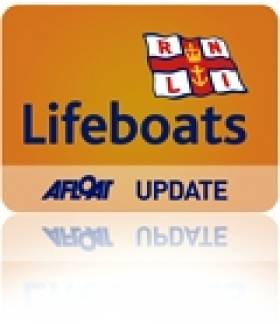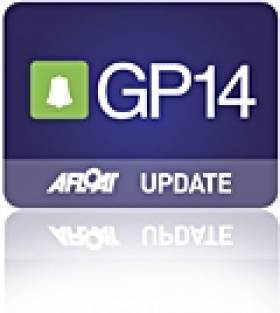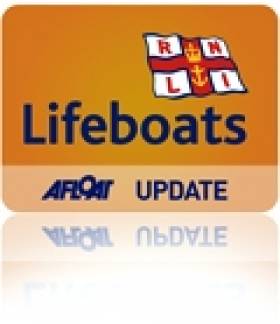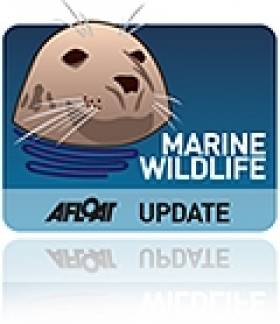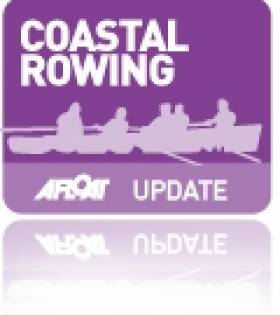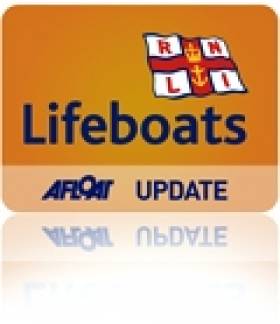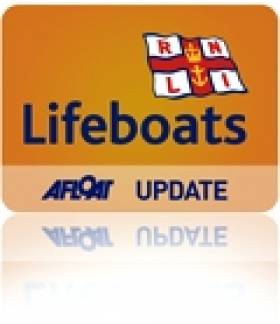Displaying items by tag: Skerries
Skerries RNLI Responds To Concerns Over Shore Walkers
#RNLI - Skerries RNLI in North Co Dublin were requested to launch by the Irish Coast Guard on Monday evening (24 June) following a call from a concerned member of the public regarding a group of people walking back to shore from Shenick Island.
The volunteer lifeboat crew launched their inshore lifeboat Louis Simson shortly before 9pm and proceeded directly to scene.
The caller had reported that the group were attempting to walk ashore from the island and were already in water up to their waists. However, shortly after arriving on scene, communication was received from Skerries Coastguard that the people in question had made it safely to shore.
Before returning to base, Skerries also requested the lifeboat to check on another group of people who were on the shoreline of Colt Island. This turned out to be a group of kayakers who were simply having a rest so the lifeboat was stood down and returned to station.
Speaking afterwards, Skerries RNLI volunteer lifeboat press officer Gerry Canning said: "It’s not unusual for people to get caught out by the quickly rising tide. We would encourage people to check the tide tables and always allow plenty of time to get to where you are going safely."
In related news, an updated and interactive edition of the RNLI’s safety handbook Sea Safety: The Complete Guide is now available free online.
The Complete Guide is the RNLI’s handbook of essential information for all those who go to sea. Its new interactive format – including videos, quizzes and challenges - means that sea safety is available on mobiles, tablets and laptops and at the tip of boaters’ fingertips.
RNLI coastal safety manager Tony Wafer said: "The Complete Guide gives more in-depth advice on how to follow these principles and stay safe on the water. It’ll cover everything from how to plan your time on the water, what safety equipment to take and how to use it, and what to do in an emergency."
Tough Weekend for GP 14s at Skerries
#gp14 – Strong winds and rough seas led to the cancellation of the second day's racing of this weekend's GP 14 Leinster Championship at Skerries Sailing Club writes Gerry Byrne. But a win and two seconds in Saturday's three races were sufficient to yield Gold to John McGuinness and his brother Donal from Moville Boat Club, Donegal sailing in a fleet of 21.
Conditions ranged from Force 3 gusting to Force 7 making for big shifts, tricky conditions and many capsizes including that of local combination Stan Shepherd and Andrew Sexton who were leading the fleet in Race 1 when they got ducked. Spinnaker work was sporadic with many boats selecting white sails only in some of the windier legs. Hugh and Dan Gill (Sutton, third overall) were not alone in sometimes electing for chicken gybes.
Apart from the overall champions, race winners were Swords couple Dan and Mairin O'Connell (second overall) and, from the Royal St George Yacht Club, Graham Elmes and Gina O'Reilly (15th overall). Silver fleet winners (4th overall) were Simon Cully and Libby Tierney from Blessington. Second silver went to Shepherd and Sexton (10th overall) and third to Ray and Brian Morrison from Lough Erne YC. Colman Grimes and Ian Fitzpatrick (Skerries SC, 13th overall) won the Bronze.
#RNLI - A fishing vessel with a fouled propeller was towed to safety by Wicklow RNLI this morning (21 June).
The volunteer crew launched their all-weather lifeboat at 10am following a report that a fishing vessel was in difficulty after a rope got fouled in its propeller.
The incident had echoes of Wednesday's rescue of a couple from their similarly fouled yacht off Arklow, as reported on Afloat.ie.
Wicklow RNLI's lifeboat crew located the drifting vessel was located by the lifeboat crew some six miles off Wicklow Head shortly after 10.30am.
A towline was quickly established and the boat was towed back to Wicklow harbour where it was safely secured alongside the south quay at midday.
Another fouling incident occurred further up the coast yesterday evening, as Skerries RNLI yesterday brought two people to safety after their motorboat got into difficulty.
The volunteer crew launched their inshore lifeboat on what was their second call out of the day shortly after 7pm following a report that a 29ft motorboat was in difficulty between Rogerstown Estuary and Lambay Island.
Weather conditions at the time were calm with a force one to two wind. Arriving on scene, the lifeboat – helmed by Willie Boylan – quickly located the motorboat which had lowered its anchor to wait for help to arrive.
Once it was established that the motorboat had fouled its propeller, a crew member was put on board the boat and a towline was established. The vessel was then brought safely back to Malahide Marina.
Speaking after the call-out, Skerries RNLI crew member Conor Walsh said: "Thankfully the crew had a VHF radio on board and were able to call for help. We were happy to assist and to be able to bring them and their boat safely to shore."
Whale Rescued In Meath Stranding Drama
#MarineWildlife - Skerries RNLI joined a number of groups in assisting a beached whale back out to sea at Gormanston in Co Meath earlier today (Thursday 20 June).
The volunteer lifeboat crew launched their inshore lifeboat shortly after 10am following reports from the Irish Whale and Dolphin Group (IWDG) that a 25ft pilot whale had beached in the area.
The lifeboat helmed by Joe May, and with crew members Emma Wilson, AJ Hughes and Laura Boylan onboard, made its way to the scene where May got into the sea and helped manoeuvre the whale back into deeper water.
Skerries RNLI then shadowed the whale guiding it out to sea, preventing it from turning back to shore by positioning the boat in its way. The lifeboat did this for about 25 minutes until the mammal was well clear of the shore.
Other agencies on scene included Skerries coastguard, the Defence Forces based at Gormanston, the IWDG, Boyne Fishermen’s Rescue and Irish Coast Guard helicopter Rescue 116.
Meanwhile, RTÉ News reports that a second whale was found dead on the beach near Mornington, north of Bettystown.
Despite initial fears that the whale was the same one rescued in the morning, it was later determined to be a different creature.
Skerries Club Prepares to Launch 'Super Fast' Rowing Skiff
Skerries Rowing Club is marching its new coastal rowing skiff down South Strand, Skerries this Saturday afternoon before launching and naming the new clinker built boat at the Slip on Harbour Road, (opposite the sailing club) in Skerries, North Dublin.
The club is also taking the opportunity on Saturday to thank master boat builder Martin O'Toole and Ciaran 'Chopper' McCarthy, a cabinet maker, for their dedication and skill in building what the club claims will be a 'super fast' rowing craft.
First Outing for Skerries RNLI's New Lifeboat
#RNLI - Skerries RNLI recorded its first service by its new inshore lifeboat on Sunday afternoon (21 April). SEE VIDEO BELOW
The North Co Dublin lifeboat station's volunteer crew was requested to launch following a report that a vessel was adrift off Bettystown beach.
Crew members, alerted by their pagers, launched their new Atlantic 85 lifeboat Louis Simson within 10 minutes.
It was quickly established that the owner of the vessel was on shore. With the potential for the personal water craft (PWC) to pose a danger, the decision was made to locate it and return it to the beach.
Once on scene, a volunteer crew member was put on board the PWC and brought the vessel safely to shore.
Speaking following the callout, Skerries RNLI volunteer crew member Emma Wilson said: "The visibility was good today, but it was something quite small we were looking for, so being able to have an extra crew member on board our new lifeboat really made a difference during the search."
Body Recovered From Irish Sea Could Be Missing Rush Man
#Missing - A body recovered from the sea off north Co Dublin yesterday may be that of a man who went missing from Rush at Christmas.
The Irish Independent reports that a post-mortem is being carried out on the body to confirm if it is that of 24-year-old Paul Byrne, who was last seen in the early hours of Christmas Day.
Fishermen in the Irish Sea made the grim discovery in their nets yesterday and brought the body to Skerries harbour after 8pm.
The Irish Independent has more on the story HERE.
Skerries RNLI Aids Stranded Powerboat
#RNLI - Skerries RNLI went to the assistance of two people whose powerboat got into difficulty off the Balbriggan coast in north Co Dublin yesterday.
Shortly after 6pm last night (Tuesday 19 February) the station’s volunteer lifeboat crew was requested to launch after the alarm was raised by gardaí that a 4-metre speed boat was in difficulty just off Hampton Cove in Balbriggan.
The boat, which was approximately three miles out from Skerries, had fouled its propeller.
Weather conditions at the time were described as cold and dusk was settling into dark.
The Skerries RNLI crew put to sea accompanied in the air by the Irish Coast Guard helicopter, which had been on exercise locally.
Arriving on scene, it became apparent that the two people on board had managed to paddle their boat safely to the shoreline. The Skerries lifeboat crew proceeded to tow the speedboat back safely to Balbriggan Harbour.
Skerries RNLI Crew Shadows Ambulance Teams in Unique Learning Experience
#RNLI - Skerries RNLI volunteer crew recently undertook an exercise the likes of which they had not done before - shadowing a local ambulance team to observe how they respond to emergencies.
Philip Ferguson, a Skerries RNLI crew member, is also an advanced first responder with the local Dublin fire brigade. He has been on many sea rescues and call outs, and though not all have resulted in an ambulance being called to the scene, there are always those incidents that do require their specialist services.
In this regard, Ferguson believed that for the local lifeboat crew to witness how the ambulance teams operate would provide invaluable experience to the crews.
He approached Skerries RNLI lifeboat operations manager Niall McGrotty and divisional operations manager Owen Medland with his idea to discuss the possibility of some of the local RNLI crew joining the ambulance teams on some of their shifts in an observational capacity. They would not be allowed to take part or assist the HSE crew at any point, they were there to look and learn.
Both agreed that it was an exercise worth pursuing, and an arrangement was then made with the local HSE ambulance base in Swords. Over a period of three weeks, all of the RNLI crew took either a day or a night shift with the HSE ambulance crews. As the ambulance teams were called out, the RNLI volunteer rode along in the ambulance, observing the HSE teams at work be it at roadside after car crashes or to the homes to which they were called.
They witnessed first-hand the long hours and the dedication put in by the HSE ambulance teams as they waited in A&E at hospitals and transported their patients with care. Each individual who went on the exercise said it was, without doubt, an enlightening experience.
They also witnessed the professionalism of the HSE ambulance crews in sometimes very difficult circumstances. They saw how the ambulance crews worked with each other, their partners, and how they did their utmost to provide care and attention to the patient as they reviewed the situation, analysed the needs of the patient and did what was necessary to stabilise and transport that individual to hospitals. Each of the RNLI crew who went on the training came back with renewed and utmost respect for the ambulance crews.
The RNLI volunteer crew has not yet had to put their latest training to the test in 2013. However, with the knowledge they gained on the observational placements, they have added to their skills.
Such was the success of this exercise between that it is hoped it can be repeated. Skerries RNLI would like to thank each of the HSE ambulance crews for allowing them to spend time with them and learn.
#rnli – Last night Skerries RNLI were requested to launch by the Coast Guard following report of a sighting of an upturned boat in the water off Gormanstown, County Meath.
A number of the Skerries RNLI Volunteer crew were undergoing assessment by the RNLI Divisional Trainer/Assessor Helena Duggan in the lifeboat station at the time. The lifeboat was launched at approximately 7pm and proceeded to the co-ordinates given by the Coast Guard.
The Coast Guard also launched the Search and Rescue Helicopter which started an airborne search off the coast from Skerries to north of Balbriggan. Shortly after, the Trent Lifeboat from Howth RNLI, out on exercise at the time, proceeded to Skerries and joined in the search. The Skerries inshore Lifeboat, along with the Trent Lifeboat from Howth, commenced a thorough grid search at sea with the Helicopter searching from the air.
At 8pm no craft could be found in the water and the Coast Guard called off the search. Howth RNLI Lifeboat returned to station and Skerries RNLI volunteer crew recommenced their examinations and assessments.



























